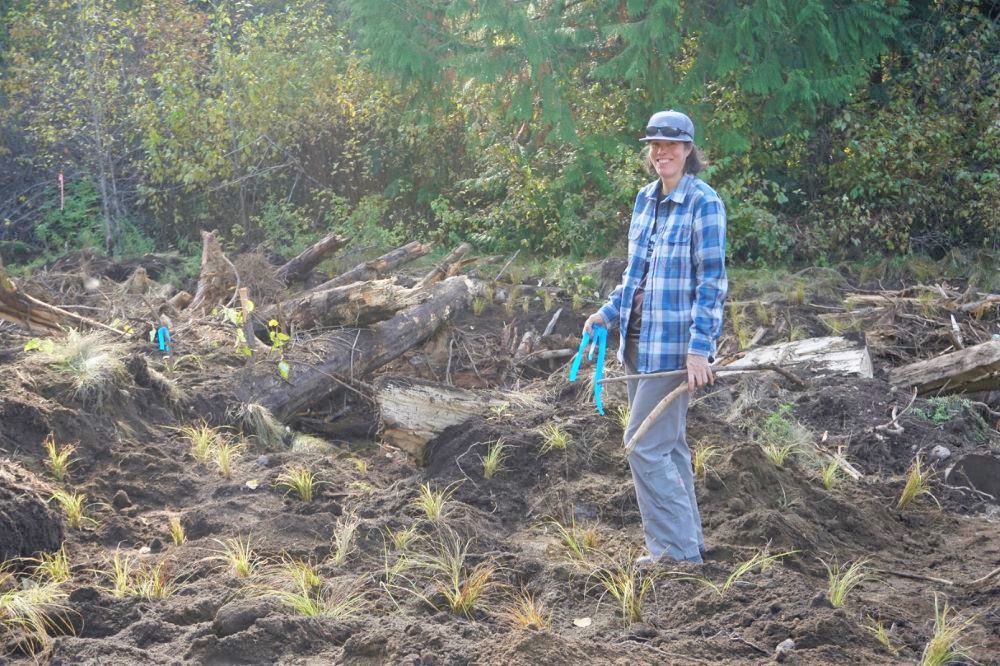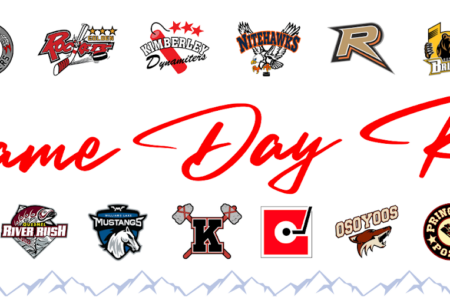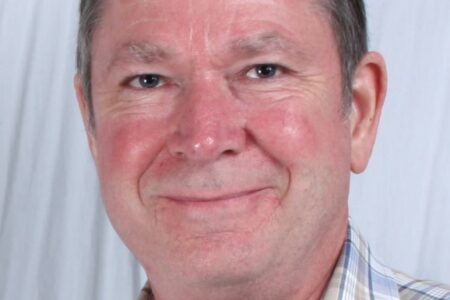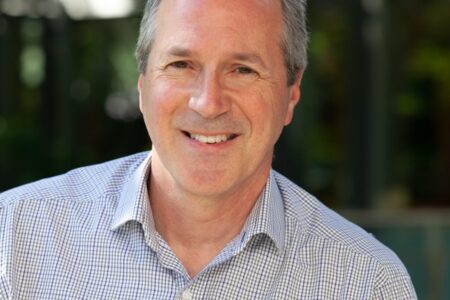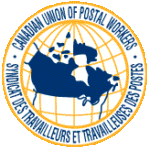Rossland's Wetland Specialist
By Nicole Trigg, for Kootenay Conservation
Wetlands are continuing to disappear at an alarming rate, and Eva Cameron is determined to turn back the tide on this trend, at least in the Lower Columbia region, one wetland at a time.
A Rossland-based independent consultant, Eva has been helping restore wetlands since 2015. She is also the vice chair of the Rossland Society for Environmental Action (RSEA), a non-profit group that supports these projects as a platform for grant applications and outreach work in the community. Her current restoration project is taking place at King George VI Provincial Park in Paterson, a small farming community south of Rossland on the U.S. border. The goal? Transform an old field back to a black cottonwood wetland complex that will provide important habitat for rare plants, pollinators, birds, amphibians, and other wildlife.
“Originally the Paterson area was a large wetland complex, but like the rest of the valley bottom there, the site was turned into a farmed field from the early 1900s,” she said. “This area became a BC Park in 1937, but continued to be hayed until recent years.”
As with her other wetland projects, Eva identified the restoration site based on its history, physical features as well as the intact plant communities.
“An old cleared hay field surrounded by black cottonwood forest drew my attention. I found a deep, straight ditch draining the bottom of it, with shallower ditches along the base of the hill — those were my keys,” she said.
Identifying a site also involves approaching the landowners, proposing a concept, getting approval for that concept followed by permitting, then finding partnerships to make the restoration work happen before moving onto the actual build. In this case, the landowners were BC Parks.
“I did a site assessment and concept plan under RSEA for BC Parks and then I brought in the BC Wildlife Federation (BCWF) to help with the restoration because they’re just a great body in terms of bringing in experts and finding funding,” she said, “so this project has been a partnership between myself, BCWF, BC Parks and RSEA, which has been involved in the public outreach and pitch-in days. I have also been lucky to work with the Kootenay Native Plant Society on vegetation surveys and a Pollinator Pathway Project, which we incorporated into the project.”
RSEA will be monitoring and managing the restoration over a few years, which is ideal for maximizing ecosystem functions.
Since she began restoring wetlands five years ago, Eva has been involved in 8 projects. She estimates it’s a two- to three-year process in terms of planning, design and the application permit process before the actual restoration work can begin. And there is no shortage of potential sites.
“Because we’re living in steep terrain, any of the flatter low lying areas have been impacted, whether that’s because of needing rail lines or roads or agriculture or just building houses or schools,” said Eva. “There’s very little of it left that isn’t impacted because it’s easier to build where it’s flat; and where development happens, wetlands are being drained and infilled.”
Due to the area’s steep terrain, wetlands in this region are characterized as “perched” wetlands, meaning they’re terraced, with small streams creating wetland pockets in the more level areas.
“So it’s quite different from the big valley bottom wetland complexes of the Columbia River or the Slocan Valley,” she said.
Given that wetland ecosystems provide functional infrastructure to human communities such as stormwater management as well as ecological benefits, Eva hopes to see more land managers integrating conservation and restoration of wetland areas as part of their planning policies and practice. The restoration sites she has done with the City of Rossland are an example of this.
Eva is also involved in the decommissioning of the Cambridge Reservoir that was once the drinking water source for the City of Trail. The RSEA Rossland Streamkeepers committee and BCWF are working with the City of Trail on a restoration plan.
“The big thing I see in development when it comes to wetland compensation pond areas is that there’s no consideration of connectivity to natural corridors and monitoring after the build. Developers are basically prescribed under the provincial guidelines to build ponds to compensate for other wetland complexes that are drained or impacted, and they’re usually put in the middle of road systems and houses, which essentially removes connectivity all around.”
The impact of mining is another consideration she needs to manage for all the restoration sites, where there may be sediment deposits containing mineral contaminants.
“You need to make sure you’re not disturbing layers and bringing those minerals into the system more than they would have been.”
A landscape designer by profession, Eva studied art and landscape horticulture and design in school. She managed her own landscape design company on the Coast for a number of years, and was always committed to doing things organically as possible and using as many native plants as she could. When she relocated to Rossland in 2004 in search of ways to make a larger scale impact, her first contracts were as a consultant with an invasive plant focus for the earlier incarnations of the Central Kootenay Invasive Plant Society and before she discovered her passion for wetlands and took the BCWF Wetlands Institute courses. Eva continues to do residential landscape design in addition to her wetlands restoration work.
“What I really enjoy about it is that there is a lot of collaboration,” she said. “I’m good at assessing and developing concepts, then I bring specialists in biology, botany and hydrology to build on that, to help determine what the target ecosystem function is and how best to enhance and restore that at a site. I really enjoy that aspect of the work.”
You can follow the Rossland Society for Environmental Action on Facebook to learn more about their current projects: https://www.facebook.com/RSEARossland
***
The Kootenay Conservation Program is a broad partnership of over 80 organizations from across the Kootenays that works to conserve landscapes in order to sustain naturally functioning ecosystems. Learn more at www.kootenayconservation.ca.


